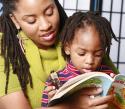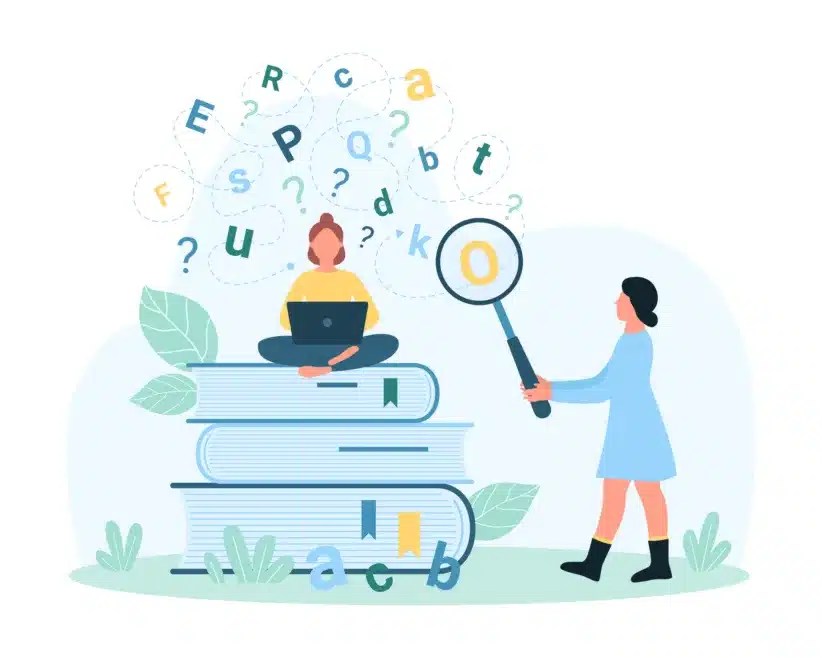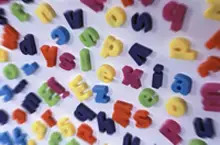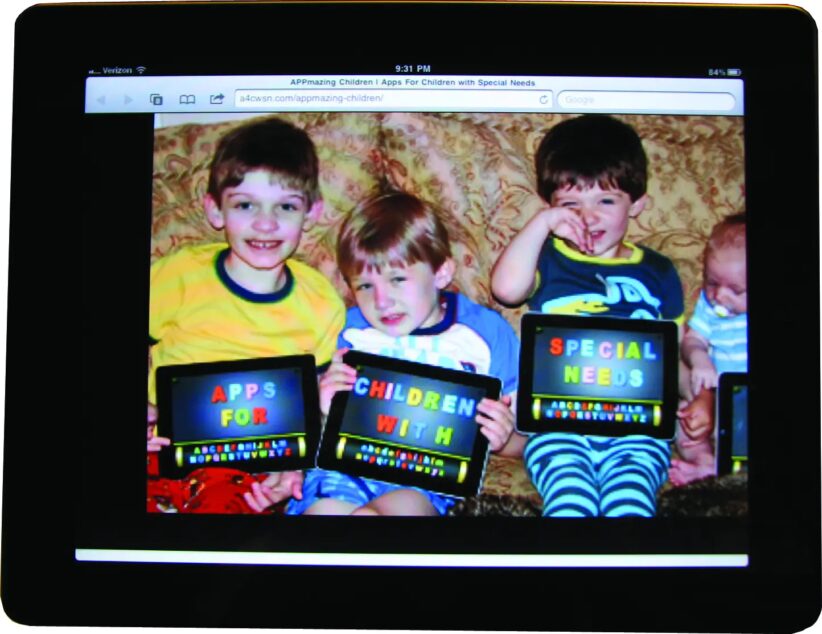Our son, Isaac, was happy in kindergarten at the local public school. Although my husband, Paul, and I noticed that he couldn’t hold a crayon properly and alternated hands when he wrote his name, we weren’t concerned. This was kindergarten, after all.
Even though Isaac had trouble writing, we were confident he would be a great reader. We read to him constantly, and he really, truly loved books. So at our first parent-teacher conference, we were stunned when Isaac’s teacher told us he might not be academically ready for the rigors of first grade because he wasn’t “reading ready”. Reading ready?!? When we were his age, kindergarten meant playing with blocks and puppets. Surely being “reading ready” was not expected of any 5-year-old!
Nevertheless, we did everything we could to help Isaac achieve success in school. He attended summer school and participated in a program for academically at-risk children. We intensified our efforts at home as well to help him with schoolwork. He seemed to be doing OK.
But in third grade, he hit the wall. His teacher told us he was struggling greatly in class. “I’m amazed that he’s not crying every day,” she said.
Paul and I had Isaac evaluated by a psychologist, who told us that our son hadn’t acquired the basic skills he needed to become a competent reader. He had a learning disability — dyslexia — which caused him to have difficulty with oral and written language.
We arranged for Isaac to receive special education services at school. He was pulled out of his regular class every day for reading instruction. And we redoubled our efforts at home.
But despite all his hard work, he just wasn’t getting it. For the first time, Isaac resisted going to school. His teacher advised us to hold him back.

One of the steps Paul and I took when we discovered Isaac was dyslexic was to join the International Dyslexia Association (IDA), an advocacy group for people with learning disabilities and their families. Rather than having a child repeat a grade, IDA suggests using teaching methods that meet the child’s special needs. The most effective method, in their opinion, is “the multi-sensory approach” which combines seeing, hearing, and movement in the teaching of reading and writing. By developing strong links between seeing a word, saying a word, and writing a word, a struggling reader can absorb the rules of reading that most children seem to pick up so easily.
We knew Isaac would benefit from the multi-sensory approach — but his special ed teacher couldn’t give him the intensive teaching he required. She worked with several children in a group, each with different needs. And we had to help him get through homework. So Isaac was getting very little instruction to address his underlying problems with reading.
No wonder he was starting to melt down. Our happy, playful family life was turning into homework boot camp. Reviews and drills replaced drawing, playground hopping, and storytelling.
Not surprisingly, my husband and I were stressed as well. We were tired of looking at our son as a walking bundle of deficits — the way the school defined him. To us, Isaac wasn’t disabled or stupid as some of his classmates claimed. He simply needed a different approach to reading and lots more practice than most in order to master the basics.
We decided to start at home. We knew there had to be a way to draw on Isaac’s many strengths to help overcome his weakness in reading. And we knew it had to be fun. Then it hit me.
We had been making up games and stories since Isaac was a baby. He loved them. Surely, we could find ones that would help him improve his reading skills — a homegrown version of the multi-sensory approach. We reasoned that, through games, we could restore the playfulness that had been missing in our life. Plus, Isaac’s little brother, Emmett, was old enough to play along.
The first opportunity came during a short vacation during winter break. The minute we checked into the hotel and the boys saw two double beds, the game began — spontaneously. As I watched them jumping from bed to bed, I grabbed my backpack and pulled out paper and markers. I put a few “problem” letters on pieces of paper. Then I asked Isaac, as he leapt, to look at the letter I was holding up and to SHOUT its sound as loudly as he could. Giving him permission to whoop it up did the trick: He was too excited to resist the “lesson”. As the game, Letter, Sound Word Jump progressed, he began — on his own — thinking of words that began with the sounds he was shouting out.
Out in the snow, we played a vocabulary game, Can You Top This? (My toes are freezing, icicles, frostbitten . . . mummified!) And each night at bedtime we would read a chapter from a book and make predictions about what would happen next.
Back home, we kept discovering new games or making up our own. We tried out Vowel Stories — drawing on Isaac’s strengths as a storyteller to reinforce his recognition of vowel sounds and to build his vocabulary. We devised Words All Over Me, a game of taping words onto parts of our bodies that followed similar spelling patterns: like FARM, HARM, CHARM on the ARM and RACK, STACK, PACK on the BACK. Over the next semester, we played a game a week to strengthen our son’s reading skills.
The payoff came at the spring parent-teacher conference: Isaac’s teacher told us that he had greatly improved in his reading and in his overall performance in class. We know the games contributed to his success.
Isaac continues to have difficulty with reading and writing even now that he attends a special school for children who learn differently. But these games still help him over the rough spots. And the bonus is that Isaac enjoys playing them with his brother, who, as it turns out, also has learning differences.
LORI GOODMAN is a reading specialist in NYC. The above games are from her book, co-authored, with Lora Myers, ‘Wordplay: Fun Games for Building Reading and Writing Skills in Children with Learning Differences’ (Contemporary Books). For information on Wordplay Workshops, contact Lori at [email protected].
Wordplay Workshops
Question: Where might you find a group of adults hurling odd insults along the lines of “You gleeking applejohn!” or “You’re nothing but a dog-hearted pumpion!”? Answer: In one of Lori Goodman’s Wordplay Workshops.
In her workshops, Goodman, co-author with Lora Myers of Wordplay: Fun Games for Building Reading and Writing Skills in Children with Learning Differences, shares the knowledge she and her husband gleaned from working with their learning disabled son, Isaac, and later, his brother, Emmett. That knowledge comes in the form of interactive word games they created to reinforce their sons’ reading abilities while still having fun. Parents participating in Goodman’s workshops sample some of those games, such as Elizabethan Insults described above, which teaches recognition of adjectives and nouns using Shakespearian language.
“Often, parents are surprised at how simple the games are,” says Goodman, who has been offering her workshops at schools and literacy conferences since 2004. “They are thrilled to see that you don’t have to be a teacher to be able to help your child.”
Other games include What Do You Know?, a dice game based on commonly (or maybe not so commonly) known facts from current media stories. “Parents find they can learn a lot from kids’ magazines,” Goodman says. “They find they don’t always know as much as they think they do.” There are hopscotch, fishing and ball games based on the frequently confused letters “b” and “d” and “p” and “q”, and on tricky words. The games are all “low-prep,” she says, so they can be easily introduced at home.
Why Does Goldilocks Have Curly Blonde Hair?…
and Other Questions Parents Can Ask Their Kids to Help Them Learn to Read
By Susan Hodara
When Eric Palewski-Brumbach, who lives with his family in Manhattan, started kindergarten, his parents, Stephanie Palewski and Will Brumbach, were told by the psychologist who’d tested him for learning disabilities that he had only a 50 percent chance of ever learning to read. Now 16 and a junior in high school, Eric’s current favorite book is Tobias Wolff’s This Boy’s Life, and he also enjoys Shakespeare and Chaucer. What happened in between was a combination of the expertise of The Churchill School that Eric has attended since kindergarten, and that Stephanie says “turned him around”; the support Eric received at home; and Eric’s own perseverance and capabilities. “He is a miracle,” Stephanie says.
But she wasn’t always so confident. Diagnosed at age 3 with a hearing problem, Eric was already falling behind in preschool. “He couldn’t remember the alphabet, and when he tried to read, he’d hold the book upside down unless there were illustrations,” Stephanie recalls.
At home, they bought him books and read to him daily. “We played all sorts of learning games,” says Stephanie. “We sang the ABCs constantly. We had colored magnetic letters on the fridge. But nothing worked.”
It wasn’t until Eric started at Churchill, a private school that caters to those with learning disabilities, that he began to learn. “He had a wonderful teacher named Harriet,” says Stephanie. “It took her several months to figure out how to teach him, but she did — using tactile methods, color coordination, sounds.”
At home, Stephanie and Will found that when Eric could listen to an audiotape of the book he was reading, he found it easier to absorb the content. “When Harry Potter came out, he was 10,” Stephanie says. “We bought the audiotape so he could read it.” In addition, they continued to read aloud to him. Today, Stephanie says, Eric is a happy, nearly straight-A student.
While Eric’s difficulties learning to read were more severe than those of many students, they resulted in the same obstacles faced by many young students — the mastery of what reading specialist Marta Brooks identifies as the goal of reading: comprehension. Brooks is a Bank Street College-educated reading specialist (she earned a Master’s degree in elementary education, and a Master of Science in Education degree in reading and literacy) who is currently a reading specialist for grades K through 5 in Westchester. “The majority of my remedial reading students have difficulty with comprehension,” she says.
The reasons for this are not limited to learning disabilities, explains Brooks, who has also taught reading in public and private schools in Manhattan, and who works as a private reading tutor. “Some children are not as cognitively mature as their classmates,” she says. “Some require more direct teaching in small group settings. Others haven’t had the same literary experiences at home that their peers have had. But whatever the cause, the most noteworthy trait these students share is that they are passive learners.”
By this she means that they lack adequate critical thinking skills necessary for reading comprehension. “They don’t understand that readers bring a great deal of knowledge and analysis to their own reading experience,” she explains. Parents, she believes, can help their children become active learners who are able to make connections while they read. “Parents can model critical thinking skills,” Brooks says.
One way they can do this is through dialogue while reading with their children. “Consider the classic, Goldilocks and the Three Bears, she says. “Tap their prior knowledge. Say, ‘I know that locks are curls and the character’s hair is golden. Maybe the author called the character Goldilocks because she has golden curls.’ Suggest predictions. Say, ‘Whose porridge, chair, or bed do you think Goldilocks will choose? I think she will like baby bear’s things because he is little and she is, too. Let’s read to see if we are right.’ And draw conclusions, such as: ‘I think Goldilocks is curious because she examined everything in the house.’”
Parents can assess their children’s comprehension by asking them to retell a story they have read. “Some children connect to the story on an emotional level, and will relate how they felt about its events,” says Brooks. “Others will recount only the literal events, but offer no further insight into the story. In such cases, parents can prompt them to help deepen their understanding of the text. Ask them: What did the characters learn? What was the problem in the story? What was the solution?”
Another way parents can help is by modeling reading fluency when they read aloud. Brooks explains, “If a reader does not read with expression and observe punctuation marks, comprehension will be difficult. If children need more explicit instruction, parents can discuss why they changed the intonation in their voice. They can parallel reading to talking by making such comments as: ‘When I see a question mark, I make my voice go up just like I do when I ask a question,’ or, ‘I pause a little bit at a comma, but I stop completely at a period,’ or ‘I read a little louder because the character is angry. You know how I sound when I am angry.’”
Even when not reading, parents can help their children develop thinking skills simply by interacting with them during everyday experiences. “Rather than just telling your child, ‘No,’ ask them, ‘Why do I want you to study before you talk to your friend?’ or ‘Why don’t I want to bounce the ball in the house?’” suggests Brooks.
And most importantly, she adds, parents can share their love of reading. “They must show, not tell, their children that reading is more than a task to be completed in school.”
NEW, LEARN-TO-READ
—As its name suggests, One Minute Reader can quickly help a child improve his reading skills. The program, developed by a reading teacher, has been used in schools for 15 years. It includes three steps — teacher modeling, which is accomplished at home by listening to a CD; repeated reading; and progress monitoring, to improve reading. Materials are color coded, not grade leveled; the highest is equivalent to a 5th grade level.
The starter kit, with book, CD and timer is $24.95; additional booklets are $12.95, at
www.oneminutereader.com.
—Hooked on Phonics, which has a pricey complete reading program for kids (CDs, workbooks, books and flashcards for $249), is now offering grade level skill packages that help kids at specific stages of reading readiness — and cost a lot less. The Learn to Read program, for Kindergarten, first, or second grade, has the some of the same musical CDs and flashcards, along with a parent’s guide and progress stickers — for $64.99 for K level, $99.99 for first or second grade, at www.hookedonphonics.com.





















